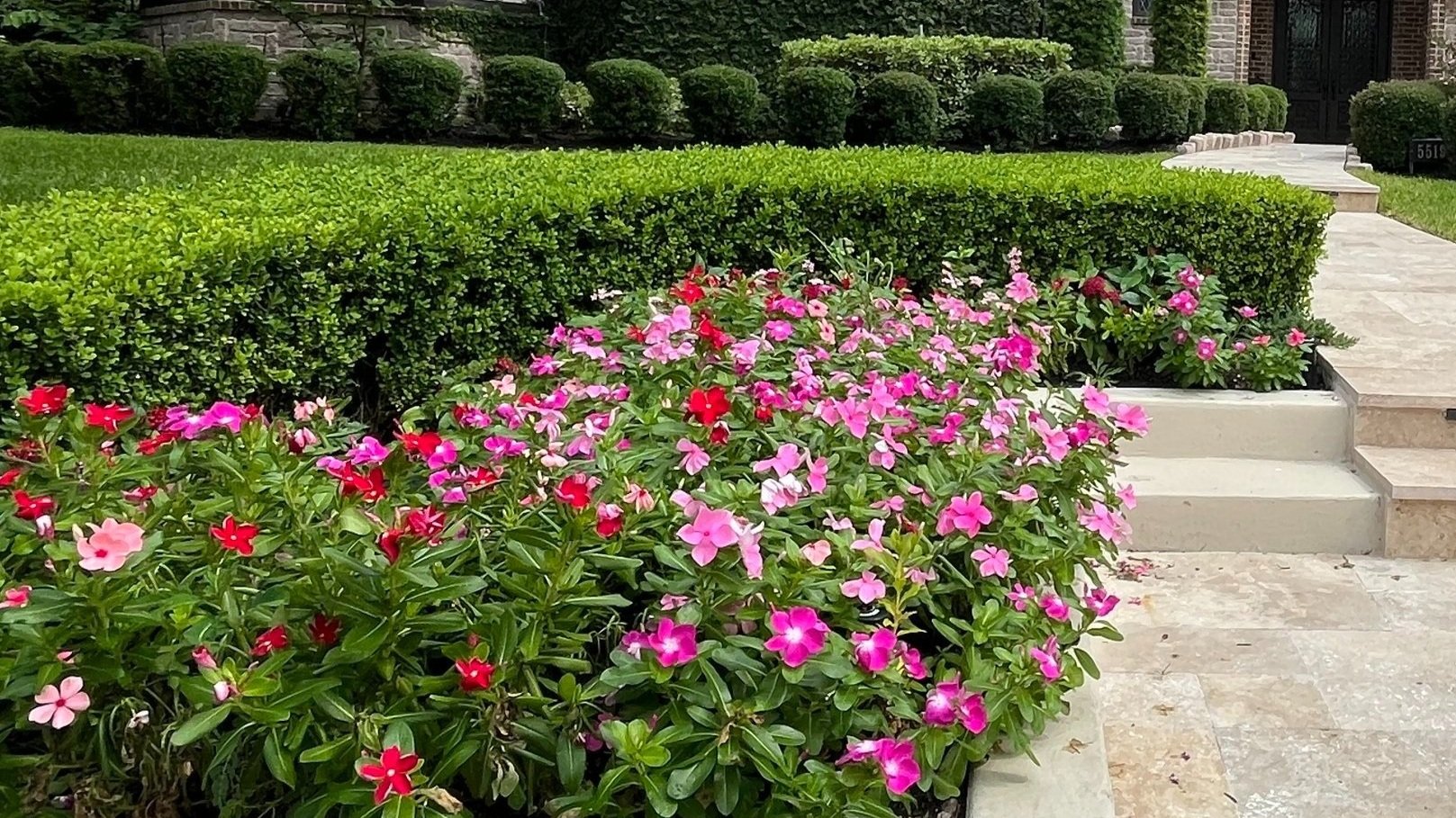Vinca Flowers: Heat-Tolerant Color for Effortless Impact
Multi-Colored Vinca Flowers
At Professional Landscape Design, we love vinca flowers (Catharanthus roseus) for their vibrant blooms, glossy foliage, and ability to thrive in Texas heat. Also known as Madagascar periwinkle, vincas are annuals in most regions and bloom from summer through fall. Their five-petaled flowers come in a wide range of colors—white, pink, red, purple, and even bi-color varieties with dramatic “eye” centers. Upright and trailing types make them ideal for beds, borders, containers, and hanging baskets.
Growth Rate & Care
Vincas flourish in full sun but tolerate partial shade. They prefer well-drained, slightly acidic soil (pH 6.0–7.0) and should be planted after the last frost when nighttime temperatures stay above 60°F. Avoid heavy clay or soggy conditions—raised beds or amended soil with compost work best. Once established, vincas are drought-tolerant and low-maintenance, making them perfect for commercial and residential landscapes.
Water Vincas moderately, only when the top inch of soil feels dry. Overwatering can lead to root rot or fungal issues. Apply a slow-release fertilizer at planting time, and for container-grown plants, supplement with liquid feed every 4–6 weeks. Vincas are self-cleaning, so no deadheading is needed, though pinching back stems can encourage bushier growth.
Vincas are deer- and rabbit-resistant, and rarely suffer from pests. However, poor drainage or overcrowding can lead to leaf spot or stem rot. Space plants 8–12 inches apart for airflow, and water early in the day to keep foliage dry. Note: vincas are toxic to humans and pets if ingested, so plant with care around play areas.
Pink & Red Vinca Plants
Landscape Design
From compact ‘Pacifica’ series to trailing ‘Cora Cascade’ and airbrushed ‘Tattoo’ blooms, vincas offer endless design options. Use them to fill gaps in sunny borders, spill from containers, or create mass plantings with bold color. At Professional Landscape Design, we recommend vincas for clients seeking long-lasting curb appeal with minimal upkeep.

